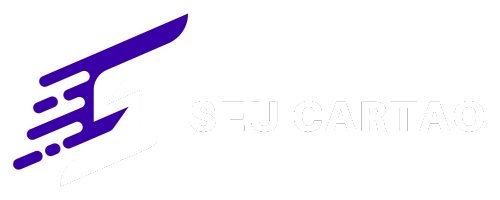Personal loans have become an integral part of the modern financial landscape, offering individuals a versatile and accessible means of borrowing money. Unlike specific-purpose loans such as mortgages or auto loans, personal loans can be used for almost any legal purpose, providing borrowers with the flexibility to address a wide range of financial needs.
This comprehensive guide explores the various aspects of personal loans, from their basic definition to their impact on personal finance and the broader economy.

What is a Personal Loan?
A personal loan is an unsecured form of credit that allows individuals to borrow a fixed amount of money, typically repayable in fixed monthly installments over a predetermined period. Unlike secured loans, personal loans do not require collateral, making them an attractive option for borrowers who may not have significant assets to pledge. The unsecured nature of these loans, however, often results in higher interest rates compared to secured loans, as lenders assume more risk.
Personal loans can range from small amounts of a few hundred dollars to larger sums of tens of thousands of dollars, depending on the lender’s offerings and the borrower’s creditworthiness. The repayment terms usually span from one to seven years, though some lenders may offer shorter or longer terms based on the loan amount and purpose.
Common Uses for Personal Loans
The versatility of personal loans makes them suitable for a wide array of financial needs. Some common uses include:
- Debt Consolidation: Many borrowers use personal loans to consolidate high-interest debt, such as credit card balances, into a single, lower-interest loan.
- Home Improvements: Financing renovations or repairs that can increase a home’s value or improve living conditions.
- Major Purchases: Funding significant expenses like weddings, vacations, or high-end appliances.
- Medical Expenses: Covering unexpected healthcare costs or elective procedures not covered by insurance.
- Business Startup Costs: Providing initial capital for small business ventures or side hustles.
- Educational Expenses: Paying for tuition, textbooks, or other education-related costs not covered by traditional student loans.
The Application Process
The process of obtaining a personal loan has been significantly streamlined in recent years, particularly with the advent of online lenders and financial technology platforms. Typically, the application process involves the following steps:
- Pre-qualification: Many lenders offer a pre-qualification process that allows potential borrowers to see estimated loan terms without impacting their credit score.
- Formal Application: This involves submitting a full application with detailed financial information and consenting to a hard credit inquiry.
- Verification: Lenders may request additional documentation to verify income, employment, and other financial details.
- Approval and Funding: Once approved, borrowers review and accept the loan terms, after which the funds are typically disbursed within a few business days.
Factors Affecting Loan Approval and Terms
Several key factors influence a lender’s decision to approve a personal loan and determine the terms offered:
- Credit Score: A higher credit score generally leads to better loan terms and a higher likelihood of approval.
- Income and Employment: Stable income and employment history demonstrate the ability to repay the loan.
- Debt-to-Income Ratio: This measures the proportion of monthly debt payments to monthly income, with lower ratios being more favorable.
- Loan Purpose: Some lenders may consider the intended use of the loan in their decision-making process.
- Existing Relationship: Having an existing relationship with a bank or credit union may sometimes lead to more favorable terms.
Advantages and Disadvantages of Personal Loans
Advantages:
- Fixed interest rates and repayment terms provide predictable monthly payments.
- Potentially lower interest rates compared to credit cards for borrowers with good credit.
- No collateral required, reducing the risk of asset loss.
- Versatility in loan use allows for addressing various financial needs.
Disadvantages:
- Higher interest rates compared to secured loans like mortgages or auto loans.
- Potential for fees, including origination fees and prepayment penalties.
- Risk of damaging credit score if payments are missed or the loan goes into default.
- Temptation to borrow more than necessary or use loans for non-essential expenses.
Impact on Personal Finance
Personal loans can have a significant impact on an individual’s financial health, both positive and negative. When used responsibly, they can help borrowers consolidate debt, finance important life events, or invest in their future. However, taking on additional debt without a solid repayment plan can lead to financial stress and a cycle of borrowing.
It’s crucial for borrowers to carefully consider their financial situation, including their income, expenses, and long-term financial goals, before taking out a personal loan. Creating a budget that accommodates loan repayments without straining other financial obligations is essential for successful borrowing.
The Role of Personal Loans in the Broader Economy
On a macro level, personal loans play a significant role in the economy by facilitating consumer spending and investment. They allow individuals to make purchases or investments that might otherwise be delayed or impossible, potentially stimulating economic growth. Additionally, the personal loan market has become an important sector within the financial services industry, driving innovation in lending practices and financial technology.
However, the accessibility of personal loans also raises concerns about consumer debt levels and financial stability. Regulatory bodies and financial institutions must balance the benefits of accessible credit with the need to protect consumers from predatory lending practices and unsustainable debt burdens.
Conclusion
Personal loans offer a flexible and potentially valuable financial tool for individuals seeking to manage their finances or fund significant expenses. While they present opportunities for debt consolidation, major purchases, and financial flexibility, they also come with responsibilities and risks.
Prospective borrowers should carefully evaluate their financial situation, compare loan offers from multiple lenders, and have a solid repayment plan in place before taking on a personal loan. With proper planning and responsible use, personal loans can be an effective component of a broader financial strategy, helping individuals achieve their financial goals and navigate life’s financial challenges.





